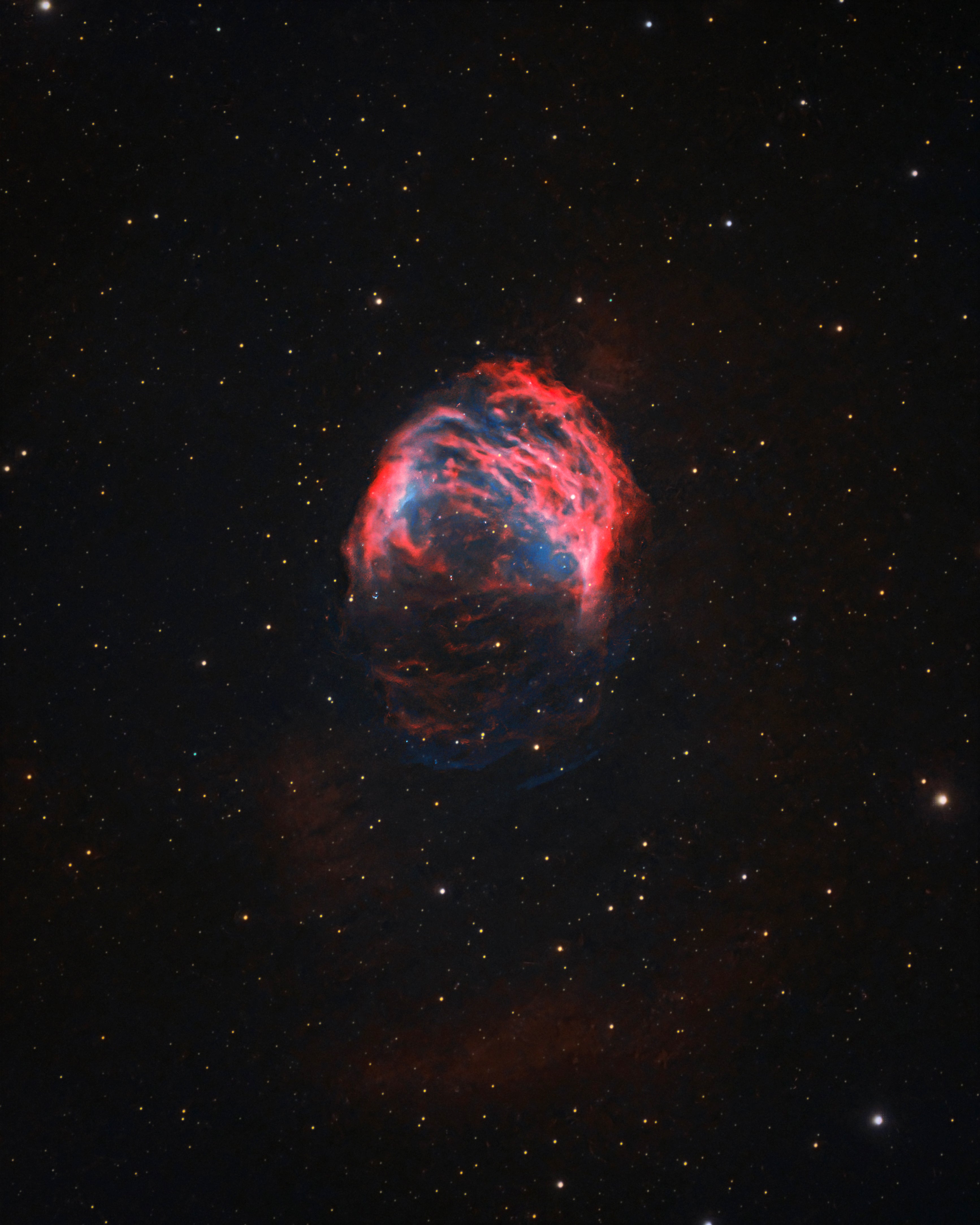
Observers of the Northern Hemisphere’s winter sky can point their telescopes toward the not-so-frightening visage of the Medusa Nebula, also cataloged as Abell 21 and Sharpless 2–274. This object’s common name comes from the braided filaments of glowing hydrogen that, in astroimages, resemble the Gorgon Medusa’s snakelike hair.
Originally thought to be a supernova remnant for more than a decade after its discovery, this object is now known to be a planetary nebula. American astronomer George O. Abell found it in 1955 while conducting a survey for such objects. Abell 21 lies in the constellation Gemini the Twins near the border with Canis Minor. In fact, one good way to find it is to look 5° due north of Gomeisa (Beta [β] Canis Minoris).
The Medusa Nebula glows at magnitude 10.3, but that brightness is a bit misleading. Its diameter is 10′, which makes its surface brightness low.
Indeed, it’s tough to spot through an 8-inch telescope unless sky conditions are ideal. Observers describe a fat arc of nebulous material with numerous dark gaps. A triangular region at its northern end and a circular region due south are the brightest areas. Step up to a 16-inch telescope to get a really good look. An Oxygen-III filter will help.
Astronomers classify the central star of the planetary nebula as a pre-degenerate star or a PG 1159 star. The latter designation comes from the Palomar-Green survey of ultraviolet-excess stellar objects. PG 1159–035 in Virgo was the first of these stars to be discovered. Such an object is changing from being a planetary’s central star, actively shedding material, into a white dwarf.









